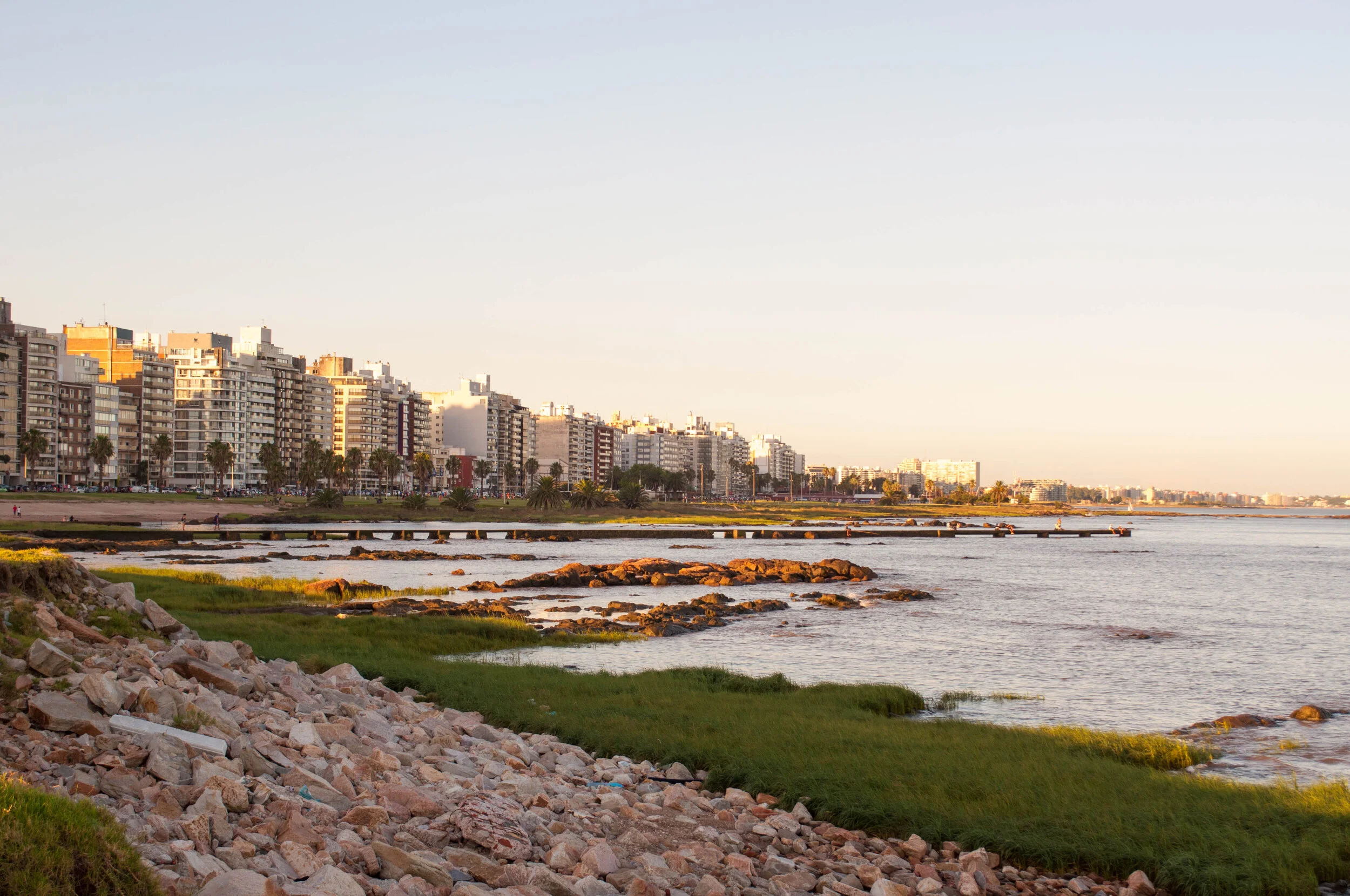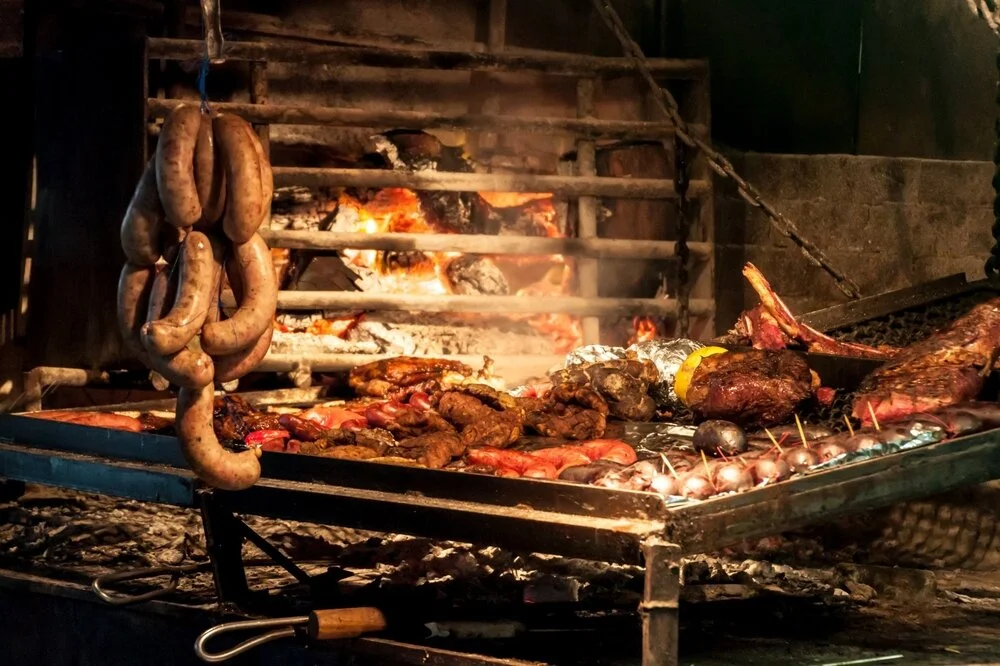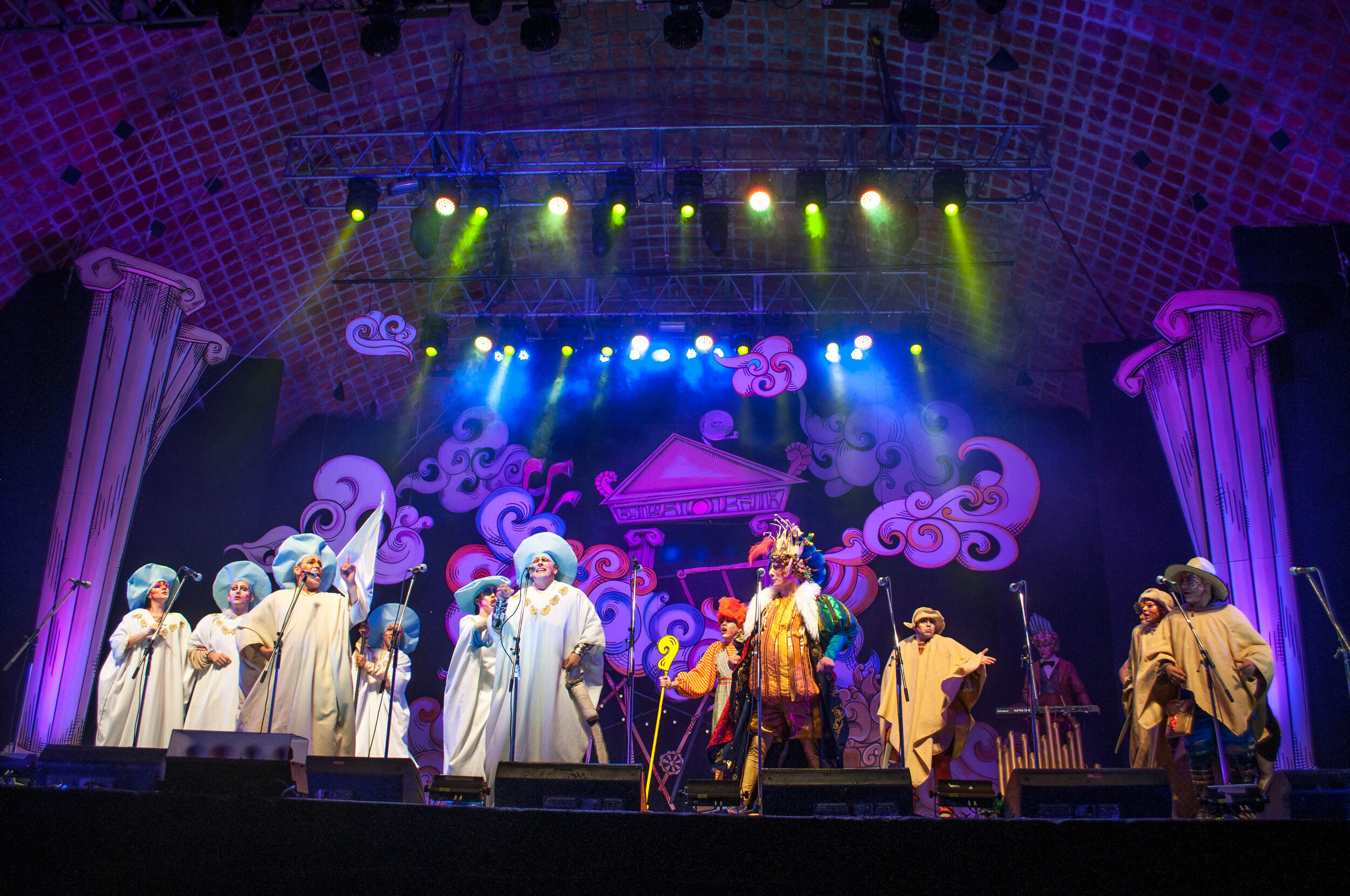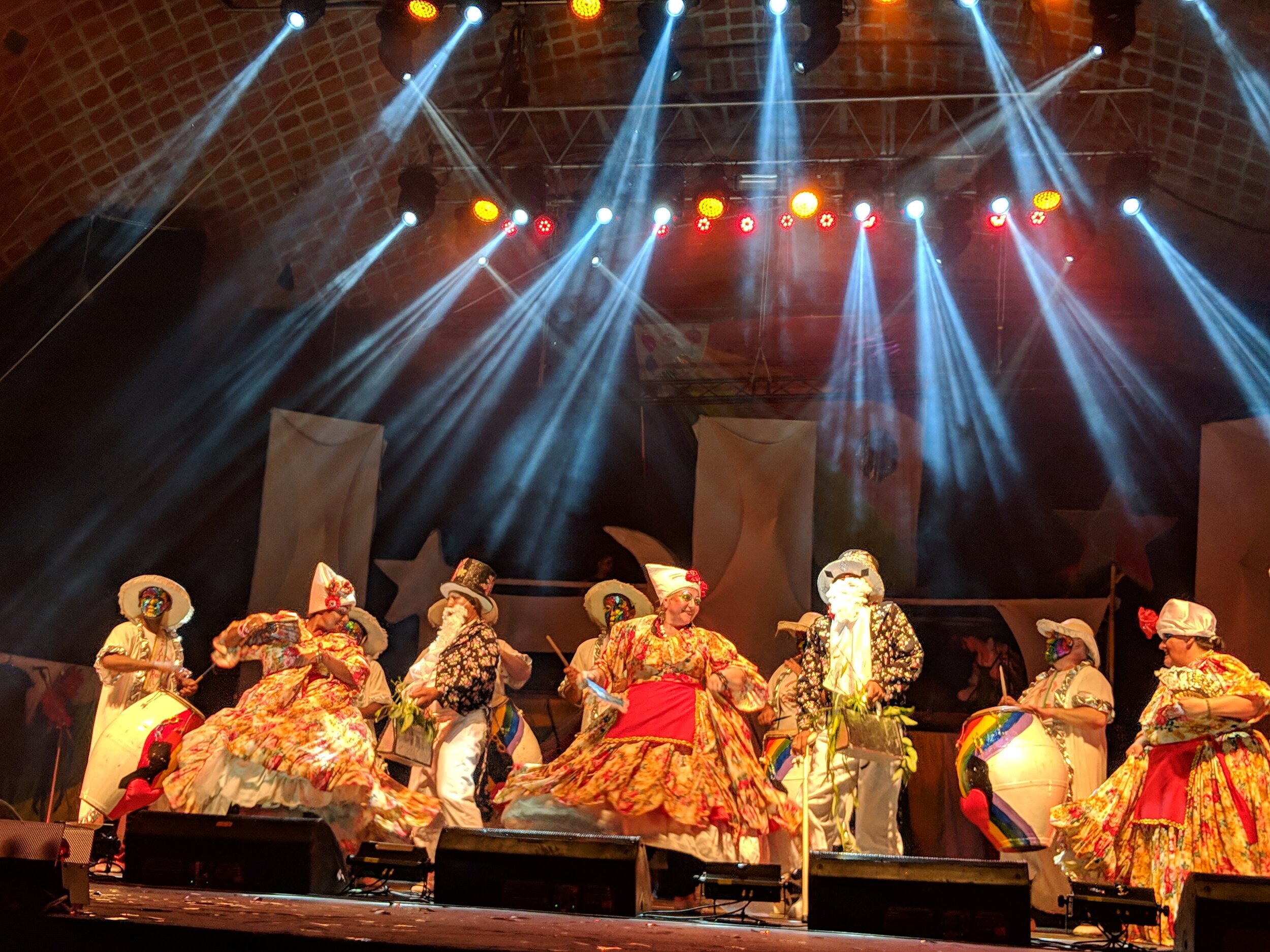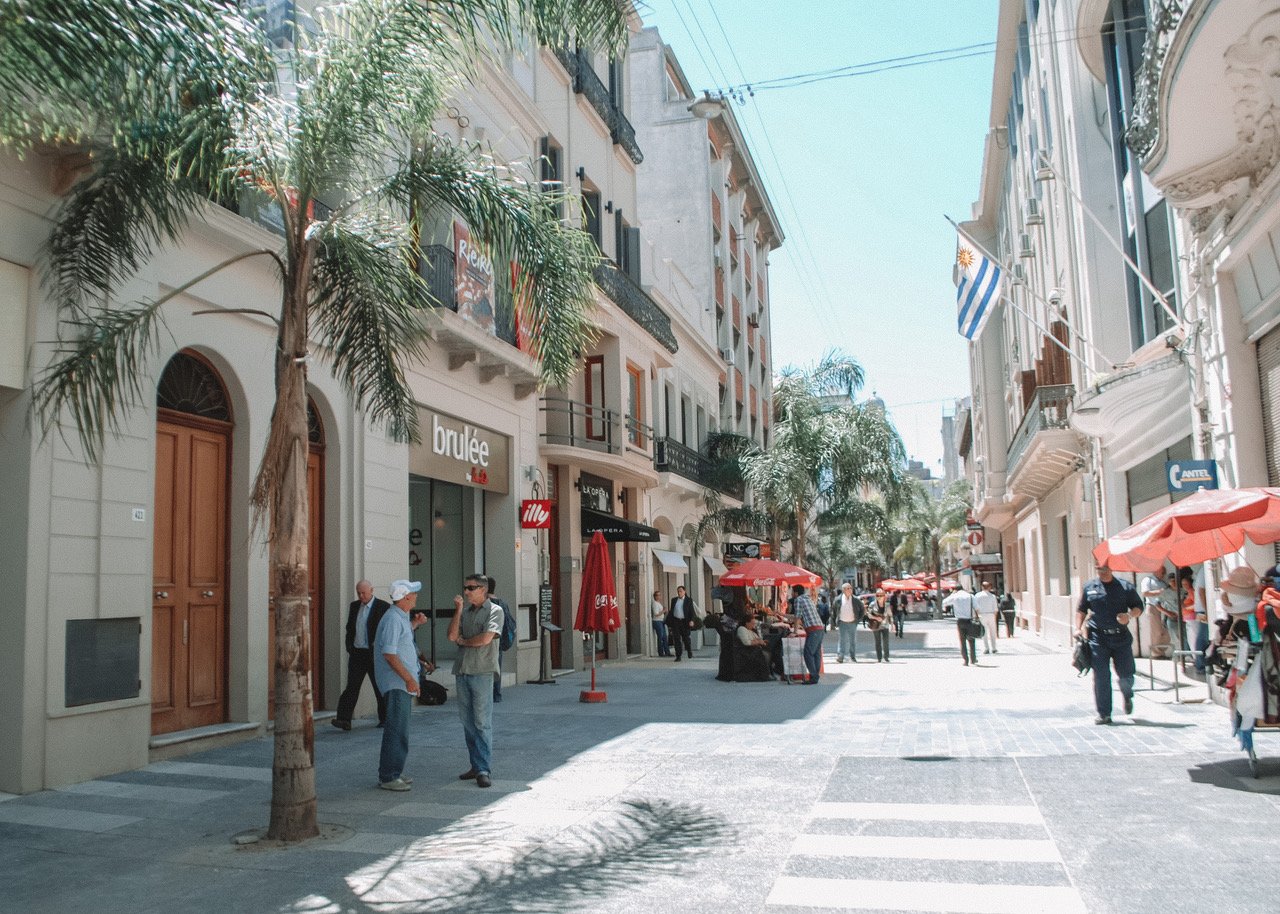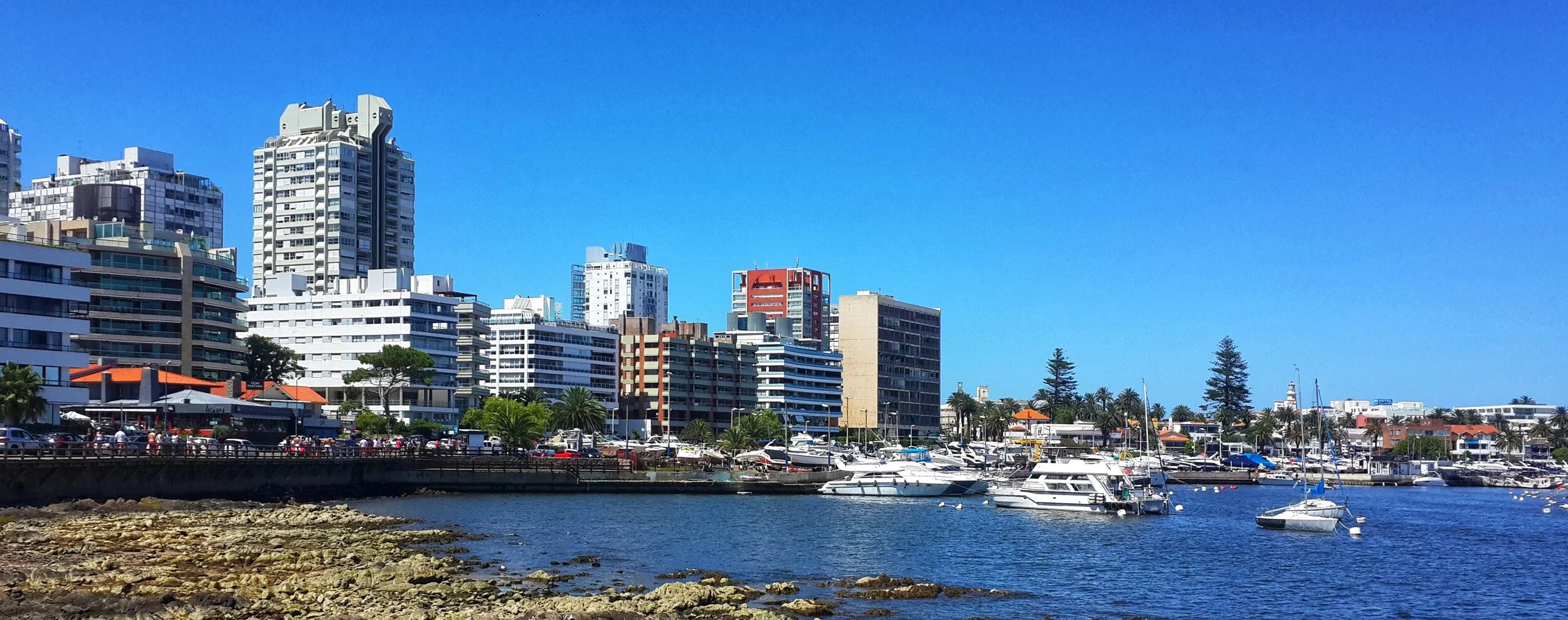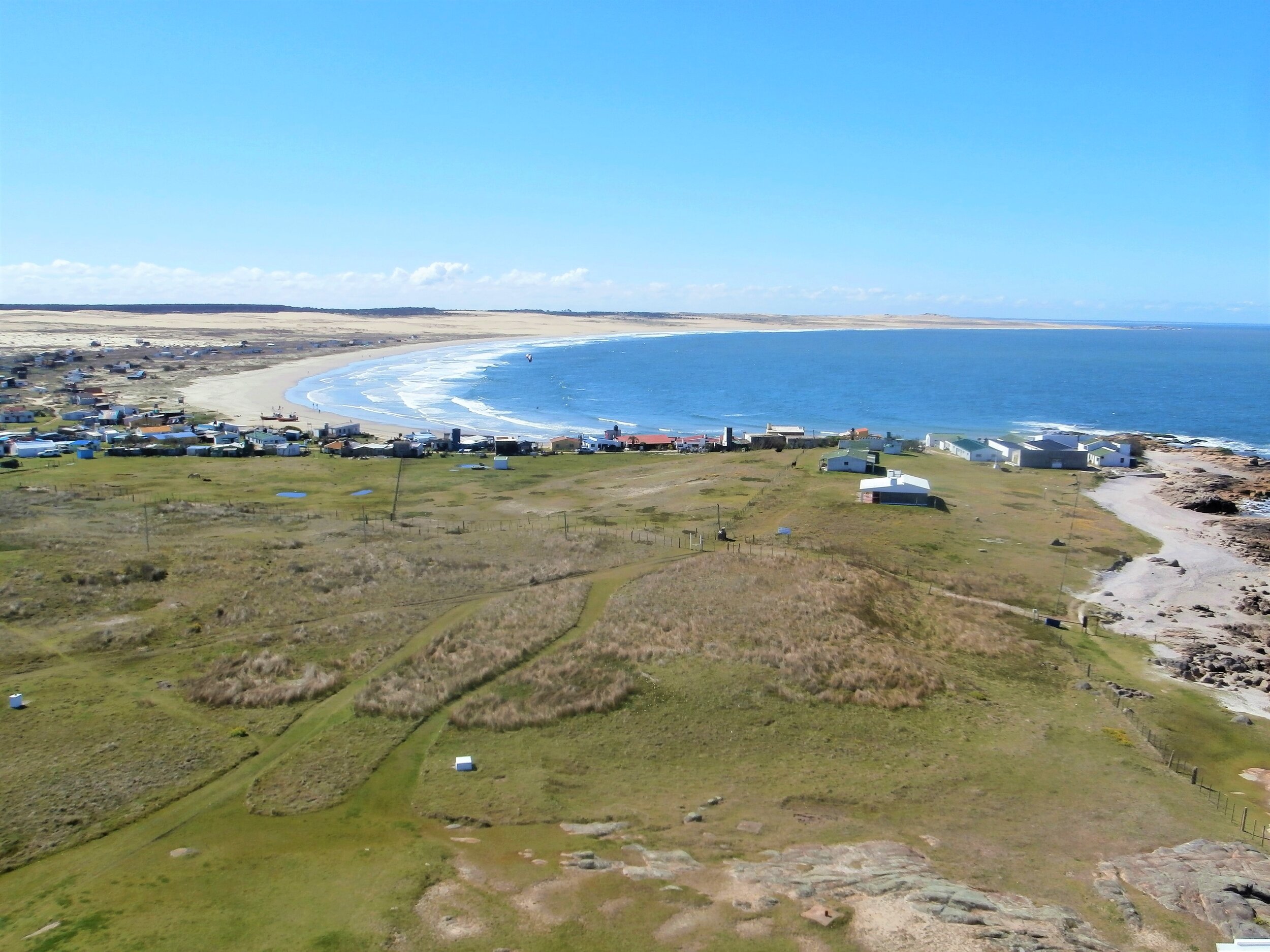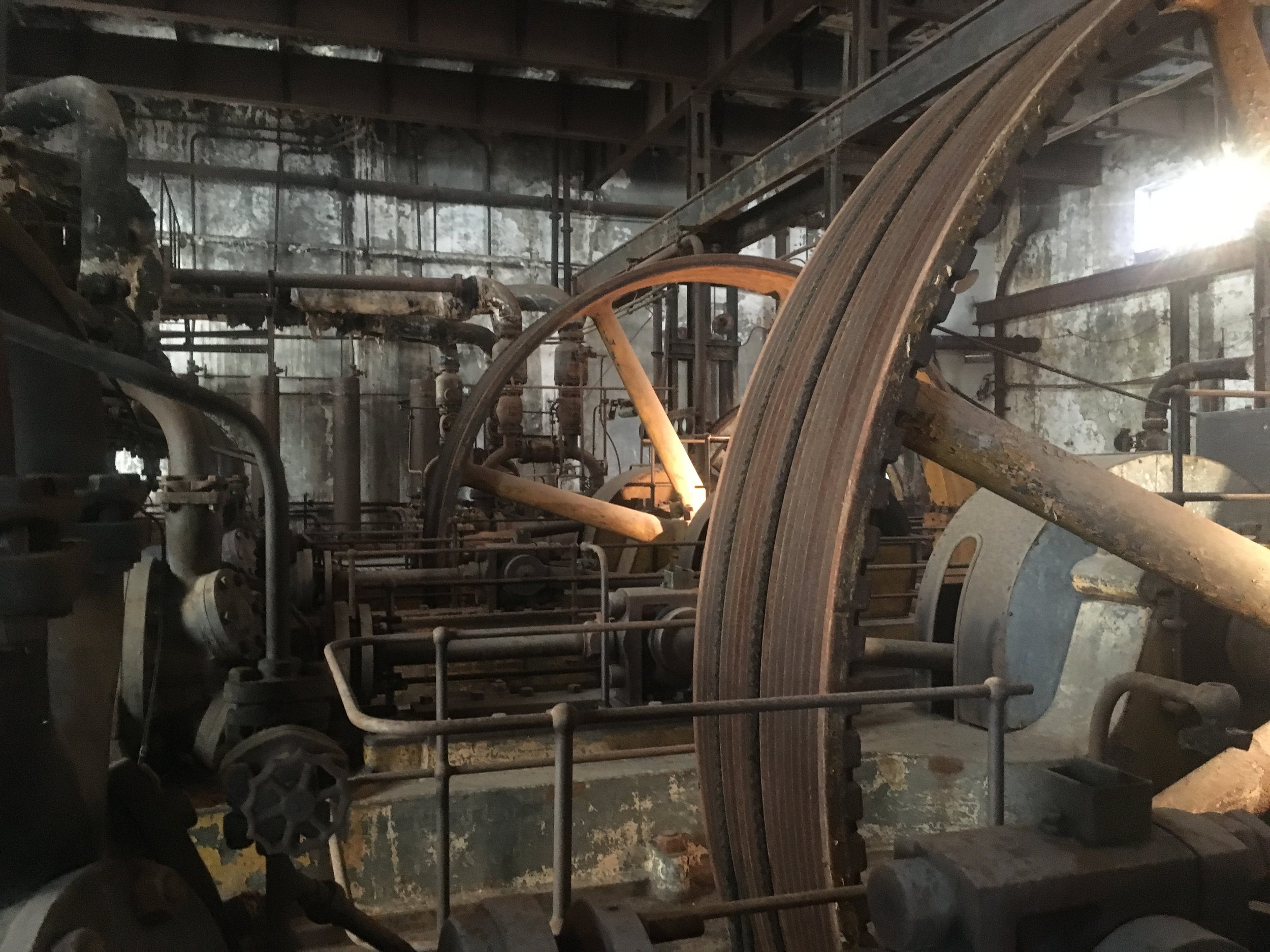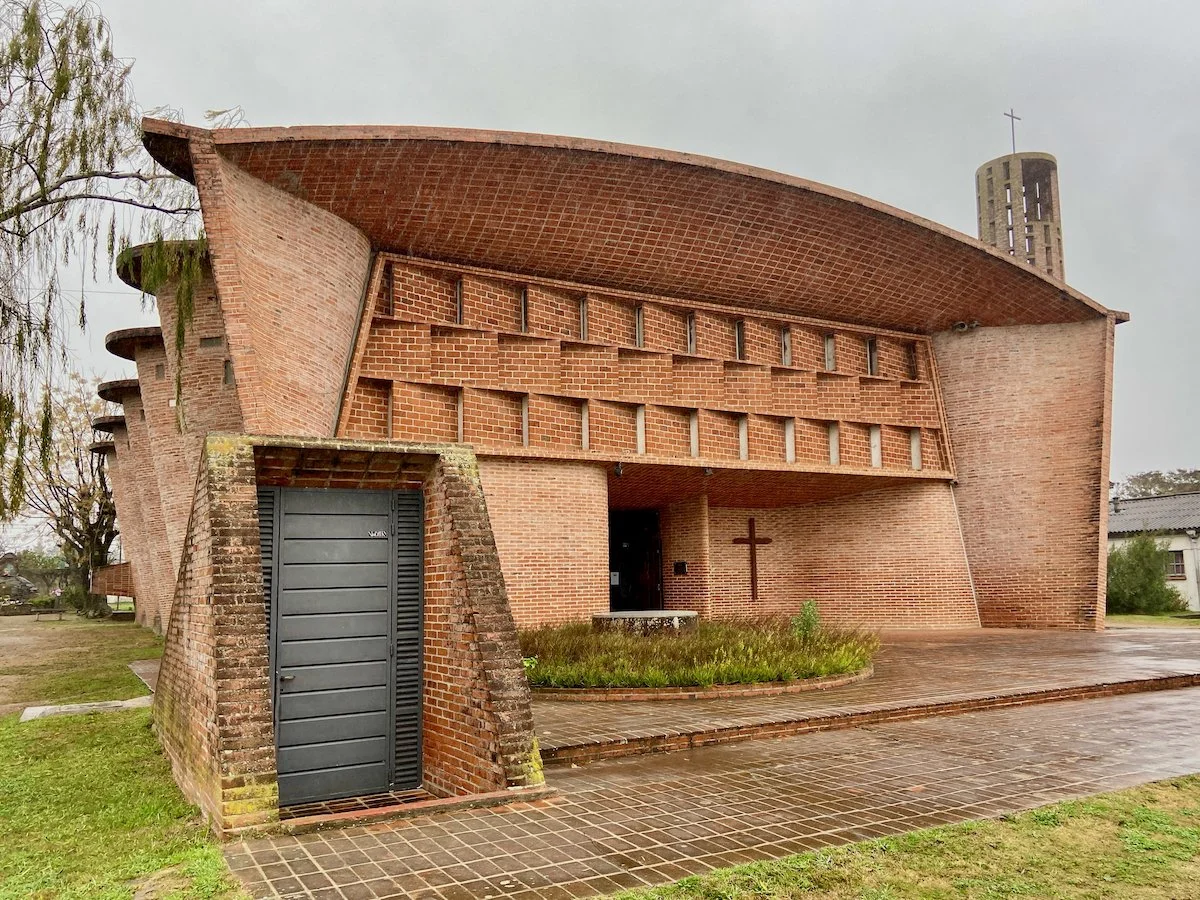12 Great things to do in Uruguay (by travel bloggers)
Uruguay is the second smallest country in South America (after Suriname), and it is surrounded by two tourism giants, Argentina and Brazil. No wonder why the country gets overlooked by many. However, for the adventurous one, visiting Uruguay can be very rewarding. Lonely Planet just named Uruguay in its top 10 countries for 2020, and let me tell you they are right to be seduced by this fascinating country! I have collected from other travel bloggers the best and most fun things to do in Uruguay. Here are the top Uruguay tourist attractions!
Montevideo
Montevideo is the charming capital city of Uruguay and you can take the time to enjoy it at its fullest in 2 days.
Ciudad Vieja
The “Old Town” was the first neighbourhood built and it still holds much of the colonial architecture. Here, you will be able to see the original layout of the city with its gates and walls. Plaza Independencia is the name of Montevideo's most important plaza. The square separates Ciudad Vieja from downtown Montevideo and while you are there you should admire the architecture of Palacio Salvo. This will be a great starting point to explore this side of the coastal city. then check out the city’s gate is called Puerta de la Ciudadela and it is easily recognizable with its impressive structure. The Old Town is a great place to get lost in the cobbled stone streets and appreciate the buildings. The Metropolitan Cathedral which the is biggest and the most important cathedral in the city is also there. As you might imagine, this part of town is full of history, and tourist attractions but it is also the busiest area at night with its cafes and bars. Head to my other article Best Things to do in Montevideo for the complete guide on the city.
La Rambla
by Claudia Tavani from My Adventures Across The World
If you happen to visit Uruguay, you should not skip Montevideo. Though the Uruguayan capital is not nearly as beautiful as other South American capitals, it certainly is charming and thanks to its easy-going atmosphere you'll end up being captured and captivated by it.
Among the unmissable things to do in Montevideo, is walking on the Rambla, Montevideo waterfront. Following the line of the Rio de la Plata, this walk goes on for a whopping 22 km, and you may want to walk it or, even better, run it or bike it. Along the Rambla, you'll find some interesting buildings and, more importantly, some of the nicest beaches in Uruguay. Mind you, they are river beaches - yet some of them have incredibly white sand and they are perfect places to relax and mingle with the locals.
If you want to have an even more local experience, make sure to visit the Rambla at the weekend, and take with you a thermos of hot water (rigorously at 84 degrees), a bag of yerba mate, a cup and a bombilla to sip on Uruguay's favourite drink. You'll notice many locals doing the same!
Mercado Del Puerto
by Stephanie Craig from History Fangirl
One of my absolute favourite things to do in Uruguay is to enjoy a delicious meal at Montevideo's famous Mercado del Puerto ( Port Market ). Originally opened in the 1860s as a train station, the building went on to serve as the most important market in Montevideo. However, it has since undergone a renovation, and now it houses the most delicious restaurants in the city. With over a dozen restaurants to choose from, you really can't go wrong. In fact, if you have the time, I suggest going back two or three (or even four!) times so you try out a few different places. The dishes include traditional Uruguayan barbecue cooked over an open wood-flame stove, called parrillas. You can eat your weight in barbequed steak, pork, and even special seafood dishes. Make sure to douse your meal in copious amounts of chimichurri, a sauce made from garlic, parsley, olive oil, oregano, and red wine vinegar. Originally from Argentina, this has now become a staple of Uruguayan cuisine. The Mercado del Puerto is located down by the water within walking distance of a few of the city's other great attractions, making it the perfect stop for a midday meal while you're out sightseeing in this fabulous city.
Experience the Carnival
Did you know that Montevideo has the longest carnival in the world? While big carnival festivities are often linked internationally to Rio de Janeiro in Brazil, the Uruguay carnival is just as unique! The festivities expand from late January to March and last for 40 days in total. These are the perfect examples of the melting pot of cultures that Montevideo has. The carnival opens with the Inaugural Parada which is held on the last Thursday of January and is followed by the Llamadas (calls) which are the first Thursday and first Friday in February. However, the Uruguayan Carnival is better characterized by the Murgas, carnival shows with choral singing and rhythm and satirical comments of the Uruguayan society. Going to the carnival is a unique way to experience Uruguayan culture to the max!
Complete your carnival experience by heading to the Museo del Carnaval. This is a small museum that captures all the essence of the carnival. It showcases instruments, costumes and masks used in the past century. The museum also explains the origins of these festivities and will show you videos of past Murgas and parades. The museum also has space to hold events and the famous tablados, and neighbourhood carnival shows.
Taking a Free Walking Tour of Montevideo
by Carley from Home to Havana
If you’re looking for the best way to get to know Uruguay’s capital city, sign up for a free walking tour. Even for travellers with a bit more of a budget, the tours offered by Free Walking Tours Montevideo are incredibly informative and engaging. These tours are hosted by local guides and are a great introduction to the city and a wonderful way to get the best advice from in-the-know Uruguayans. They can also be a fantastic way to meet other travellers.
These walking tours will take you through the best of the city, including the major historic plazas, the Montevideo Cathedral and Cabildo, Teatro Solis, and finally, the Mercado del Puerto. Hang around here after the tour ends to try some of the delicious food in this historic market, one of the best markets in Latin America. Make sure to talk with the tour guide and get their recommendations for what to try and where to eat in the market and beyond.
The best part is, that there is no need to book in advance – just head to the Plaza Independencia near the Artigas monument around the time the tour would begin (Monday through Friday at 10 AM, or Saturday and Sunday at 3:30 PM) and join the group.
Punta del Este
by Daniel from Health Travel Junkie
Punta del Este in Uruguay is one of the top holiday destinations on the Atlantic Ocean side of South America, competing with Mar del Plata in Argentina, as well as Rio de Janeiro and Florianopolis in Brazil.
During Summer vacation in Punta, you can go out every night, and experience great parties, while meeting travellers from all over Latin America, and even Europe. To relax in the daytime, go to one of the many pleasant central beaches (remember the sunscreen).
Some neighbourhoods remind me of St Tropez in France. There are sail yachts, pine trees, and millionaire holiday homes. Altogether very first-world in appearance. Moreover, you'll find fine dining with flair, a few healthier restaurants, and well-stocked supermarkets, although not the cheapest food. Like a real Uruguayan, drink yerba mate tea while enjoying the tranquil relaxed vibe on your hotel balcony. Then go take a selfie at the famous hand monument ("Mano de Punta del Este"). Later in the day, get sundowners at Casa Pueblo, once home to the famous Uruguayan artist, Carlos Páez Vilaró. This is in Punta Ballena.
Punta del Este is very easy to reach with frequent buses departing from Montevideo's Tres Cruces Station (around 2h30min travel time).
During the December/January holidays, I would definitely spend more time in Punta del Esta than in Montevideo, which becomes a "ghost town" around Christmas and New Year's Eve. Of course, Punta gets much emptier after the tourists leave around early February. Nevertheless, many retirees and expats prefer Punta to Montevideo, since it's a more relaxed atmosphere, with less crime.
If you are looking to extend your trip, transform it into a road trip and add José Ignacio a former fishing village turned upscale resort.
Cabo Polonio
by Iris Veldwijk from Mind of a Hitchhiker
Uruguay has so many beautiful beach destinations at one of the country’s many rivers, lakes and the Atlantic Ocean. If you’re looking for a getaway at the ocean, Cabo Polonio is the most rewarding one. It’s also the polar opposite of Montevideo’s vibe.
You can take the bumpy 4WD bus from the main road, but it’s far more enjoyable to do it on foot if you can. The sandy hike to Cabo Polonio is about 7 kilometres long and takes you through some beautiful nature. Eventually, you’ll see the lighthouse and the town itself. Once you’re on the beach and its sand dunes, it’s nice to take your shoes off and walk the remaining bit barefoot between the peninsula and the village.
Cabo Polonio is a good place to clear one’s head. The town is off-grid, meaning generally won’t find electricity, running water, or plumbing unless the owner installed some solar panels themselves. It attracts lots of artsy folks, nature lovers, and kite surfers. There’s also a colony of sea lions perma-perched on the rocks. There are a few places that offer accommodation for the night. You can hike back to the main road or take a 4WD vehicle back to the electrified world.
As the ozone layer is quite thin in the southern hemisphere, make sure to cover yourself well and use a generous layer of sunscreen to protect yourself. The best time to visit is in spring or autumn.
Colonia del Sacramento
This is a super popular day trip from Buenos Aires as it is only a short 1-hour ferry trip away. This tiny historic town is located on the country’s east coast, across the Río de la Plata. Here are its must-dos.
Barrio Historico is a UNESCO World Heritage Site because it mixes architecture from the Portuguese and Spanish rule since the 1600s. Not only the type of architecture is beautiful but the cobbled stone streets, colourful facades, vine-draped shops and palm-fringed boardwalks will make you want to photograph every corner. After strolling around, head to the Convent of San Francisco. Despite being destructed by a fire in the 1700s, you can wander through the pathways and old stone to the Colonia del Sacramento lighthouse; and who doesn’t love a lighthouse? Don’t forget the Basilica of the Holy Sacrament which is one of the oldest churches in all of Uruguay. Calle de Portugal is another must-do where the antique cars permanently parked there have been enhanced with foliage and flowers.
Photo by Pamela from The Directionally Challenged Traveler
Drink Mate
Drinking mate is an absolute must-do! Uruguayans love Mate, and love might be an understanding! While I disliked the drink, I found it too bitter, the hubby loved it. Below, are his recommendations.
You leave and experience Uruguay at its fullest without drinking and trying some Mate! Mate, maybe with wine, can be considered the national beverage of Uruguay. You will see it and when you get there: it is simple every Uruguayan drink mate on the street of Montevideo, at the beach and pretty much everywhere else.
Very bitter, Mate is drunk warm in Uruguay. In some places such as Paraguay, the mate is drunk cold. Funny fact, Mate is in reality the pot in which you put the tea leaves, the actual tea is called yerba mate! To enjoy a good mate, you need experience in preparing one. You have to put the right amount of yerba, use cold water at first, pour the bombilla (the straw) and then pour with water no more than 80 degrees C. Complicated? Not so much, but watch some Youtube videos first to enjoy your mate at its best or simply ask a local to show you how it works. Quick tip, the most popular yerba is called Canarias and comes in a very distinctive yellow packaging! So get ready to try one of the most popular beverages in all of Uruguay!
Sadly, there are no cafes or places where you can try mates if you are a tourist. You will either have to make new friends try it or you can buy the whole kit to make a mate yourself. If you don’t like the drink, you can keep it as a nice souvenir as some mate can be beautiful!
Photo by davide ragusa on Unsplash
Fray Bentos
by Sarah from A Social Nomad
The sleepy town on the river that is Fray Bentos isn’t on the tourist trail by any stretch of the imagination and there is very little remaining of the brand that began in 1863, apart from a huge amount of history. And a quite glorious UNESCO World Heritage site. The Fray Bentos brand was famous for tinned corned beef and tinned meat pies. Fray Bentos also supplied meat pies during the world wars to both sides of the conflict. The factory that began the iconic brand is a short walk from the town itself.
The factory is in a state of arrested crumbling decay but is a stunning visit. This was the first place in Uruguay to get electricity, but inside the factory, you’ll see little information on this site that was enlisted into the UNESCO World Heritage site list in 2015. The museum entry is $50 pesos, with a guided tour for $120 pesos (they’re sometimes available in English), but visit on Tuesdays and they’re all free. If you’re in a small group tours can last as long as you want them to (3 hours is a good bet) and they are incredible. Walkthrough the old slaughter sheds, see how the meat here was refrigerated and see the machinery which is still in place. If you are squeamish or vegetarian, this will be a tough tour – and you can avoid parts of it. The animal husbandry here was incredibly basic. However, the history here is immense and the famous brand touched and supported many people across the world.
Church of Atlántida
Contributed by Shandos Cleaver of Travelnuity: Dog-Friendly Travel
The latest site in Uruguay to be listed on the UNESCO World Heritage list is quite a surprise. The Church of Atlántida is a small modern church located in Estación Atlántida, 45km east of Montevideo, and previously well off the agenda of tourists. However, for lovers of architecture and those curious to visit World Heritage sites, it is well worth visiting.
The church was built by Eladio Dieste, a Uruguayan engineer who built a wide range of structures from warehouses and silos to churches during the 20th century, mainly in Uruguay. He is best known for his development of the Gaussian vault, a thin-shell supporting structure for roofs built with a single layer of bricks, that derives its strength from a type of arch.
A sequence of brick Gaussian vaults can be seen in the Church of Atlántida, which is distinctive for its simple, exposed brick construction. The full name of the church is "Iglesia de Cristo Obrero y Nuestra Señora de Lourdes", translated as Church of Christ the Worker and Our Lady of Lourdes. Inaugurated in 1960, it's an excellent example of 20th century modern architecture in Latin America.
While the church previously only had limited opening hours, recent reports are that it is now open daily to visitors. The church is located in between Montevideo and Punta del Este, and is just a short detour off the highway if you are driving in between the two. Alternatively, catch the hourly 710 bus from Montevideo to Estación Atlántida or the regular buses along Ruta IB, then a taxi for the final 3km to the church.
Canelones
Recommended by Kim of Explore Your Bucket List
While in Montevideo it is very easy to plan a day trip to the wine region of Canelones. One of the largest winemaking regions in Uruguay, with over 120 wineries to explore, can be reached in less than one hour from the city. Several of the wineries offer a tour and wine tasting lunch onsite.
Winemaking is a tradition in this area dating back to the 1870s as Italian immigrants settled in the region. Just as clay soil influences the character of the wine in Canada’s Niagara Region, the clay soil in this area also contributes to the wine's pleasant balance and acidity.
This region is known for the unique grape varietal Tannat. The grape originally came with the Italians when they settled in the region however the French also brought along their version which has much stronger tannins and is quite full-bodied. The French grape is what has been adopted and is now enjoyed as the region’s signature wine. The warm climate of Uruguay results in a softer, more pleasing taste for this unique wine varietal. White wines are also increasing in popularity and the wineries are experimenting with Sauvignon Blanc and Chardonnay.
Most of the wineries in the area are small family-run operations. It is not uncommon to see 3 generations working at the wineries. One such example is the Pizzarno Family Estates. It opened in 1910 and the focus of its winemaker is using modern technologies along with old-world processes to produce a more relevant product in the world of wine today.
Be sure to plan a wine tour of the fascinating region of Canelones where you can enjoy a relaxed day of exploring the vineyards while tasting a special wine not made in many other locations of the world.
If you are still looking for other trip ideas in Uruguay then you should consider the Santa Teresa National Park. The park is located along the Atlantic coast it has sandy beaches but it is also an important nature reserve, a greenhouse and of course the historic Fort of Santa Teresa.
Travel tips for Uruguay
GETTING AROUND
Montevideo is a small city and it can easily be visited on foot. The capital also has a great public transport system with subway, buses and urban trains that can take you around. To get in and out of the city you can use the buses, they are easy to use and very comfortable. The prices are also reasonable.
GETTING TO MONTEVIDEO
Uruguay is a small country. Its international airport in Montevideo has not had many connections. You will most probably have to make a transfer to a neighbouring country to arrive in Uruguay.
You can also take a 4-hour ferry from Buenos Aires or drive from either Argentina or Brazil.
SAFETY
Uruguay is probably one of the safest countries in South America! The quality of life in the country is very high compared to the rest of the region so social discrepancies and violence are less striking.
TAP WATER
You can drink tap water so ditch your plastic bottle and fill your reusable bottle everywhere.
WHEN TO GO?
Uruguay has 4 stations and the winter can get very chilly. However, I would suggest visiting in the summer so you can enjoy the beaches and the energy of the carnival.
CURRENCY
The currency used in Uruguay is the Uruguayan peso (Peso Uruguayo in Spanish). Uruguay is quite expensive compared to Argentina and other countries in the region, the prices were similar to the ones that we have in Montreal (Canada).
Credit cards are widely used everywhere. In fact, credit cards are encouraged and most shops and restaurants will give you a 15%-20% discount if you use your card. So don’t be afraid to use it, when possible! This saved us tons of money! The government is encouraging this so that the money reserves of the country stay as stable as possible.
POWER
In Uruguay, the power plugs and sockets are of type C (Euro type of plugs), F, I and L (3 pins in a row). The standard voltage is 230 V and the standard frequency is 50 Hz.
Do you like the content? Why not help me by buying me a virtual cup of tea?
PIN IT FOR LATER!

